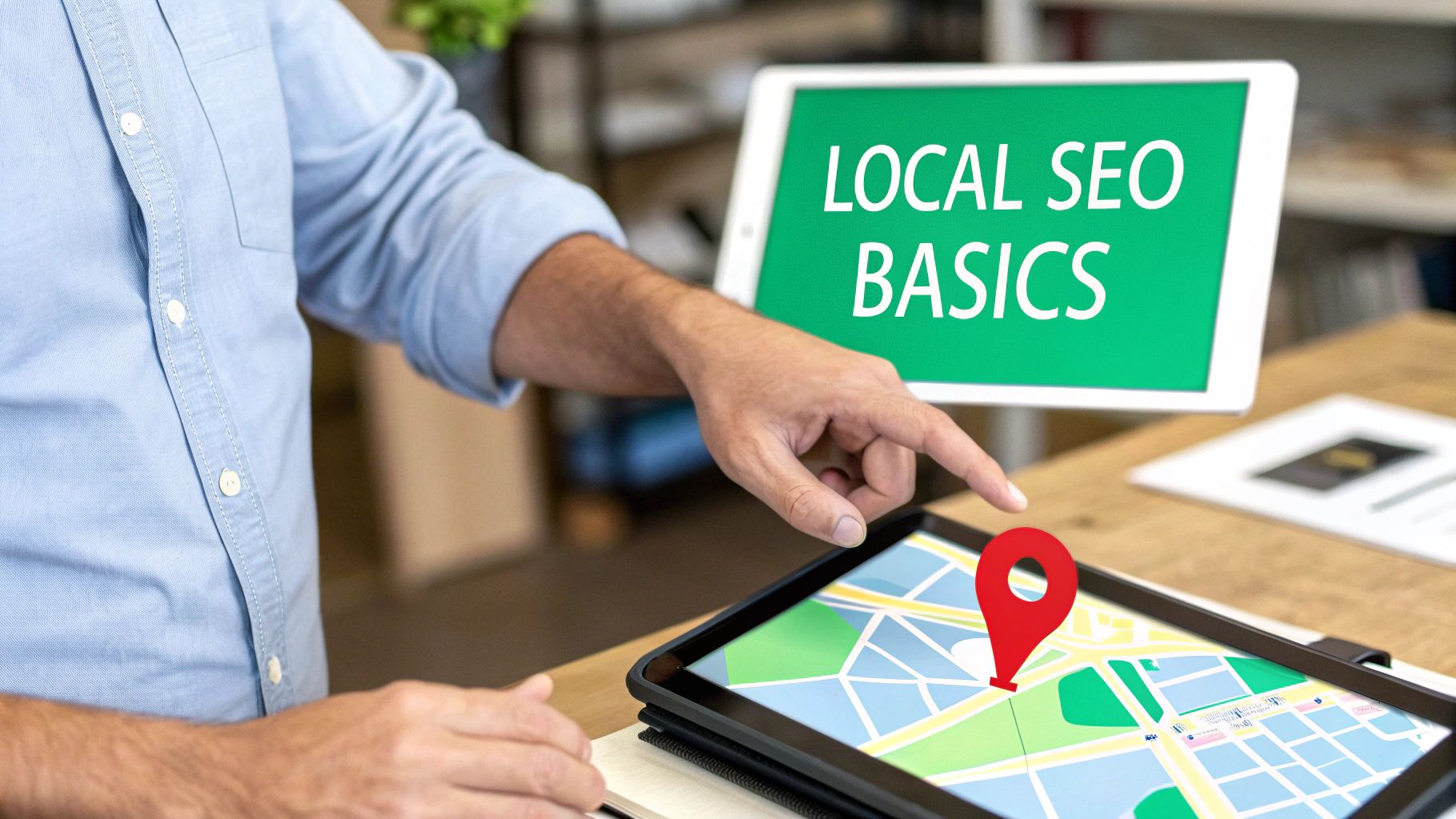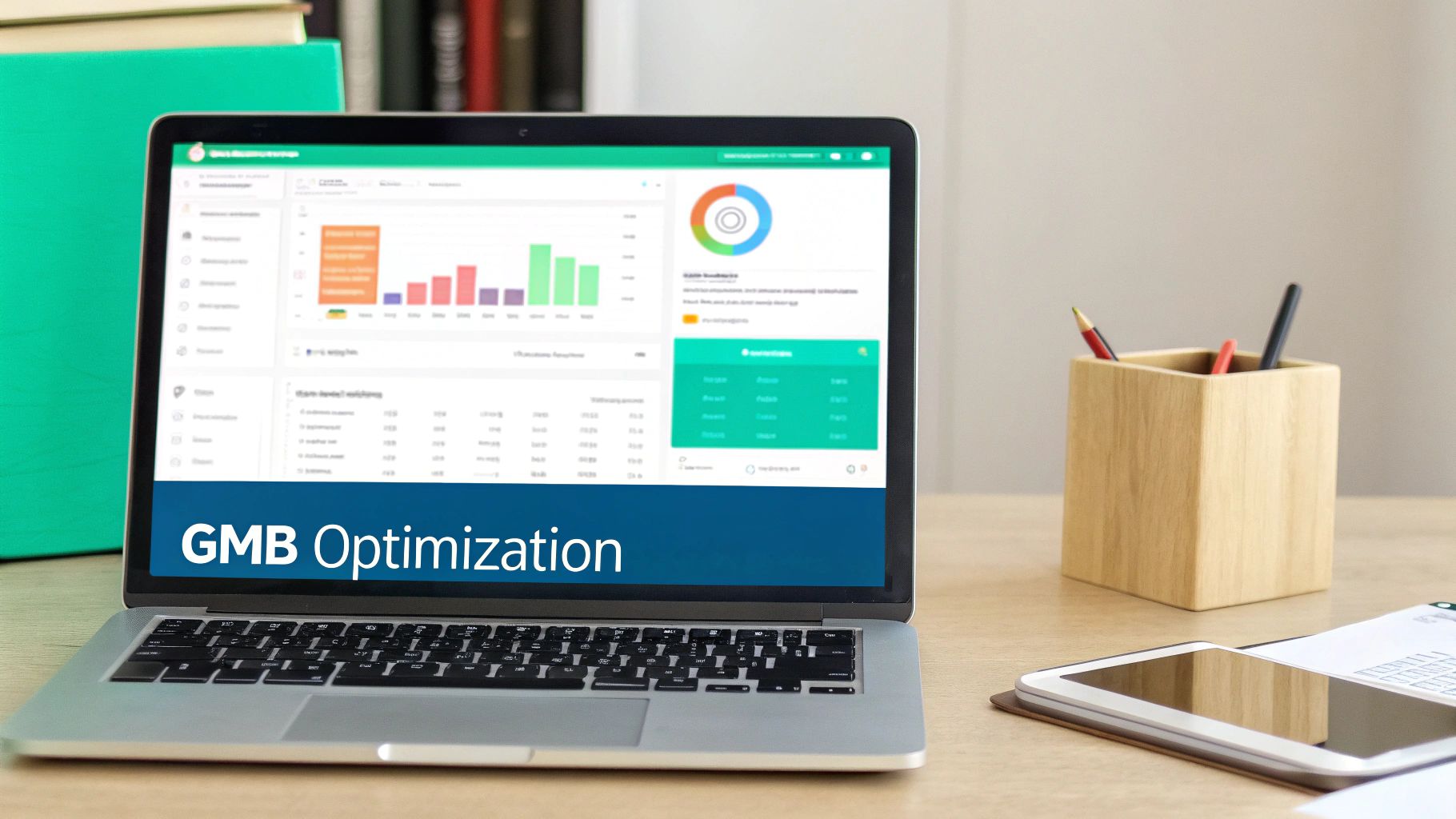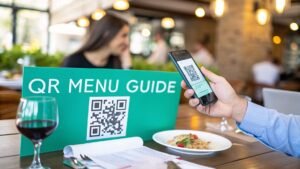Understanding Today’s Local Digital Marketing Reality

The connection between local businesses and their customers has undergone a significant transformation. While traditional marketing avenues like print ads and flyers still hold some value, they simply aren't enough in today's landscape. A robust digital presence is no longer a luxury, but a necessity. This shift demands that local business owners adapt and integrate digital marketing strategies to maintain a competitive edge.
Why Traditional Marketing Falls Short
Traditional marketing often employs a broad approach, aiming to capture a wide audience. However, it lacks the focused precision of digital strategies. Consider a radio advertisement, for example. It might reach thousands of listeners, but only a small fraction of them are truly interested in your specific offerings. This translates to a substantial portion of your marketing budget being allocated to individuals unlikely to convert into customers.
Furthermore, traditional methods frequently make it difficult to accurately gauge the return on investment (ROI). It's challenging to pinpoint precisely how many customers were acquired through a particular flyer or newspaper advertisement. In contrast, digital marketing allows for precise targeting and comprehensive tracking, providing valuable data-driven insights into campaign performance.
The Digital-First Consumer
Consumer behavior has decisively shifted toward a digital-first approach to decision-making. Before visiting a physical store or making a purchase, consumers are increasingly reliant on search engines, social media platforms, and online reviews. Consider your own habits – how often do you research a business online before visiting?
This underscores the critical importance of a strong online presence, particularly for local businesses. If your business is difficult to find online, prospective customers are highly likely to choose a competitor who is readily accessible. This trend is clearly reflected in the projected growth of the global digital marketing market, estimated to reach £472.5 billion by 2025 and projected to sustain a 13.6% Compound Annual Growth Rate (CAGR) through 2033. Within the UK, 54% of small businesses identify increasing sales revenue as their primary digital marketing objective. Learn more about this evolving landscape in the UK here.
Local vs. National: A Different Approach
While certain digital marketing principles apply universally, local businesses demand a more specialized strategy. National brands often prioritize building widespread brand awareness, while local businesses aim to attract customers within a defined geographic area. This means that digital marketing for local businesses emphasizes strategies like local SEO, targeted online advertising, and active community engagement.
For example, a national clothing retailer might launch a nationwide ad campaign, whereas a local boutique would concentrate on reaching customers within their city or region. Recognizing this fundamental difference is essential for maximizing the effectiveness of your digital marketing initiatives. It's about cultivating connections within your community and solidifying your business as the local authority within your specific industry.
Mastering Local SEO That Actually Works

The infographic above illustrates how local businesses engage with their audience on various social media platforms. Instagram leads the way with an average engagement rate of 1.6%. Facebook follows with 1.2%, while Twitter trails at 0.8%. These statistics underscore the importance of a targeted social media strategy, choosing the platforms where your potential customers are most active.
Attracting local customers hinges on optimizing your online presence for local searches. This goes beyond simply having a website. It requires a strategic approach to local SEO, focusing on the factors that search engines like Google use to rank businesses in local search results. Your Google Business Profile (GBP) is a cornerstone of this strategy. It's often the first thing a potential customer sees, making a strong first impression critical.
Optimizing Your Google Business Profile
Think of your GBP as your online storefront. It needs to provide complete and accurate information about your business. This includes your address, phone number, website, hours of operation, and a clear description of your products or services. Adding high-quality images and videos can dramatically improve your profile's attractiveness. GBP listings with over 100 images receive a remarkable 1065% more clicks than those with fewer. Considering the 97 billion local searches performed monthly, leading to 1.5 billion visits to physical locations, the connection between online presence and real-world traffic is undeniable. More statistics can be found here.
The Power of Local Keywords
Effective local SEO relies heavily on keyword research. It's crucial to understand how potential customers search for businesses like yours. A bakery, for example, might target keywords like "best croissants downtown," "custom cake bakery near me," or "birthday cake delivery [city name]". Using these location-specific keywords in your website content and GBP description helps search engines connect your business with relevant local searches. Learn more about optimizing your local presence with this helpful guide: How to master local SEO.
Building Local Citations
Local citations are online mentions of your business, including your Name, Address, and Phone number (NAP). Consistency is key. Ensuring your NAP information is accurate and identical across all online directories is crucial for local SEO. Discrepancies can confuse search engines and harm your rankings. These citations build credibility and establish your business within the local community.
The table below illustrates the importance of various local SEO ranking factors, comparing their impact and ease of implementation:
Local SEO Ranking Factors Comparison: This table compares the impact and difficulty of implementing various local SEO ranking factors.
| Ranking Factor | Impact Level | Implementation Difficulty | Time to Results |
|---|---|---|---|
| Google Business Profile Optimization | High | Low | Fast |
| Local Keyword Research & Implementation | High | Medium | Medium |
| Building Consistent Local Citations | Medium | Medium | Medium |
| Location-Specific Content Creation | Medium | Medium | Long |
As this table demonstrates, optimizing your Google Business Profile offers the quickest and most impactful results. While other factors like keyword research and citation building are important, they typically require more effort and time to yield results. Content creation focused on local interests can be a valuable long-term strategy, building community connections and establishing your business as a local resource.
Leveraging Location-Specific Content
Creating content that resonates with your local audience can forge strong customer relationships. This might involve showcasing local events, highlighting community involvement, or addressing specific local issues. A hardware store, for instance, could publish a blog post about preparing for a common regional weather event. This type of content strengthens community ties, positions your business as a valuable local resource, and fosters customer trust.
Building Social Media That Drives Local Customers

Social media marketing for local businesses is all about building real relationships within the community. These relationships turn neighbors into loyal patrons. This section will cover which platforms deliver the best results for various local businesses, focusing on community-driven approaches. A core component of local SEO is making sure your business shows up when customers search online, for instance, for a Mechanic Shop Near You.
Choosing the Right Platforms
Not all social media platforms are the same. The ideal platform for your business depends on your target audience and the nature of your business. Facebook, with its extensive local advertising tools, remains a powerhouse for reaching specific demographics within your community.
Instagram, a visually-driven platform, excels at showcasing products and building an engaging brand aesthetic. Meanwhile, platforms like TikTok and Nextdoor offer unique ways to engage with your audience.
Creating Content That Resonates
Creating compelling social media content doesn't have to break the bank. Authenticity and relevance are key. Show off your business's personality, share behind-the-scenes looks, and highlight your unique selling points.
For example, a local bakery could share videos of their bakers decorating cakes, or post recipes featuring locally sourced ingredients. This builds trust and strengthens community connections.
Engaging With Your Community
Social media is a two-way street. Actively engage with your followers, respond to comments and messages, and participate in local online discussions. This demonstrates that you value your customers and are invested in the community.
Consider partnering with other local businesses for cross-promotional activities. This expands your reach and strengthens your standing within the local business ecosystem.
Leveraging Local Hashtags and Geotargeting
Hashtags and geotargeting can greatly expand your local reach. Use relevant local hashtags to connect with potential customers searching for businesses like yours. Geotargeting ensures your paid advertising efforts reach the specific geographic area you're targeting.
For example, a restaurant could use hashtags like #[cityname]eats or #[neighborhood]restaurants and geotarget ads to reach people within a specific radius. These tools help ensure your message is seen by the right people.
Cost-Effective Advertising Strategies
Social media advertising is a cost-effective way to reach new customers. Platforms like Facebook and Instagram offer detailed targeting, allowing you to focus your ad spending on specific demographics, interests, and behaviors.
This precision helps you maximize your budget, even when competing with larger companies. Regularly monitoring and analyzing your campaigns helps you understand what works best and refine your approach for optimal performance. This data-driven strategy improves your ROI and grows your customer base efficiently.
Creating Content That Connects With Your Community
Content marketing for local businesses takes a different tack than strategies for national brands—and that's your opening. This section explores building content strategies that cement your business as the trusted local expert while boosting customer engagement and foot traffic.
Understanding Your Local Audience
Effective content starts with understanding your local audience. What are their interests, needs, and frustrations? What information are they seeking online? For example, a local hardware store might discover customers are searching for tips on winterizing homes or selecting the right paint. By addressing these local needs, the hardware store becomes a valuable community resource.
Types of Content That Resonate Locally
Certain content types resonate particularly well with local audiences. Helpful guides addressing local concerns are a strong starting point. Consider blog posts, how-to videos, or downloadable checklists. Behind-the-scenes content humanizes your brand and fosters trust. Share staff stories, showcase your process, or offer facility tours. A local restaurant could create videos featuring chefs preparing signature dishes or discussing locally sourced ingredients.
Highlighting local events presents another powerful avenue. Create content around local festivals, farmers' markets, or community gatherings. This shows community involvement and offers relevant, engaging content. Consider partnering with other local businesses to co-create content and cross-promote offerings.
Content Creation on a Local Business Budget
Many local businesses operate with tight budgets and limited time. This doesn't preclude content marketing. Smart repurposing strategies can stretch your content further. A blog post can become a series of social media updates, or a short video can be crafted from a longer webinar. User-generated content, like customer reviews and testimonials, is another valuable tool. Encourage customers to share experiences and showcase these testimonials on your website and social media channels. This approach expands reach without overtaxing resources. You might be interested in: How to master website copywriting.
Building Community Through Content
Community involvement is crucial for local content marketing. Sponsoring local events, participating in community initiatives, and partnering with local charities offer valuable content opportunities. Sharing experiences and highlighting contributions demonstrates community commitment, building goodwill and strengthening customer relationships.
By understanding your local audience, crafting relevant content, and actively engaging with the community, you cultivate a strong online presence that drives tangible results. Building trust and relationships within your community is key to long-term success.
Mastering Online Reviews And Reputation Management

Online reviews are today's version of word-of-mouth marketing. They heavily influence what people buy. Unlike spoken recommendations, though, online reviews are permanent. They affect your reputation indefinitely. This makes managing your online presence essential for local businesses to thrive. This section offers strategies for building and protecting your online reputation and transforming it into a powerful growth tool.
Proactive Strategies For Encouraging Reviews
Building a strong online reputation starts with actively seeking reviews from happy customers. It's vital to be strategic about it. Avoid generic requests. Instead, personalize your approach. The timing of your request is also key. Ideally, reach out shortly after a positive interaction. This improves the chances of a positive review.
-
Timing: Contact customers soon after a purchase, completed service, or any other positive experience.
-
Messaging: Create personal messages that express gratitude and invite feedback. Don't use generic templates.
-
Platform Selection: Direct customers to platforms relevant to your business and your target audience. For example, restaurants might focus on Google and Yelp reviews.
Responding To Reviews: Building Relationships And Demonstrating Commitment
Responding to reviews—both positive and negative—demonstrates that you value customer feedback. For positive reviews, express your thanks and acknowledge the specific compliments. This strengthens positive experiences and encourages future engagement.
Handling negative reviews with professionalism can turn a difficult situation into a chance to show your dedication to customer satisfaction. Acknowledge the issue, offer a sincere apology, and suggest a solution or next step. Publicly showing your responsiveness can build trust with potential customers who see how you handle criticism. For even better community engagement, consider a comprehensive user-generated content strategy.
Reputation Monitoring: Staying Ahead Of Potential Issues
Keeping an eye on your online reputation is crucial for addressing concerns quickly. Use reputation management tools to track mentions and reviews across different platforms. This helps you spot potential issues early and lessen their impact.
Many online tools can send alerts for new reviews or mentions of your business. This allows for quick responses and keeps you informed about the ongoing conversation surrounding your brand.
Recovering From Reputation Challenges: Building Long-Term Trust
Even with the best preparation, reputation problems can still occur. Having a response plan is critical. Be honest and transparent in your communication. Focus on the steps you're taking to fix the situation and prevent it from happening again. Showing a real commitment to resolving issues and improving service can rebuild trust and strengthen your connection with the local community. Find out more in our article on how to master digital marketing for local businesses. Building a positive online reputation is an ongoing process. By actively engaging with customers, addressing feedback effectively, and monitoring online conversations, local businesses can create a positive online presence that drives growth and builds strong, lasting relationships with their community.
Measuring What Actually Matters For Local Business Growth
While a vibrant analytics dashboard can be impressive, the real question is: are those numbers driving actual business growth? This section explores practical measurement strategies for local businesses, empowering owners to make data-driven decisions without getting lost in vanity metrics. We'll focus on the key performance indicators (KPIs) that genuinely correlate with success, moving beyond superficial clicks and impressions.
Identifying Your Core KPIs
Certain KPIs are more valuable for local businesses than others. These include crucial metrics that reflect real-world engagement:
- Foot Traffic: The number of customers visiting your physical location.
- Phone Calls: The volume of calls from online activity.
- Online Conversions: Completed actions like online orders, bookings, or form submissions.
- Customer Lifetime Value (CLTV): The total revenue generated by a customer throughout their relationship with your business.
These metrics paint a clearer picture of your digital marketing's impact on real-world outcomes. Tracking phone calls from your Google Business Profile can show how effectively your online presence drives direct contact.
Setting Up Tracking Systems for Actionable Insights
Collecting data isn't enough; it must provide actionable insights. This requires setting up the right tracking systems. Tools like Google Analytics and conversion tracking pixels can measure campaign and website element effectiveness for online conversions.
Using call tracking numbers lets you attribute calls to specific marketing sources. This shows which online channels are producing the most valuable leads. This data-driven approach allows for efficient resource allocation and optimized campaigns.
Interpreting Analytics Data and Identifying Opportunities
The real value is in data interpretation. Analyzing trends in foot traffic, phone calls, and online conversions can reveal key optimization opportunities. For example, if you see a spike in online orders at a particular time, you might adjust your social media posting or online ads to leverage that peak activity.
Data analysis should be an ongoing process. It should allow you to adapt your strategies to changing customer behavior and market trends. Finding patterns within your data helps fine-tune your marketing efforts.
Measuring Offline Conversions From Online Activities
Understanding the full customer journey is critical for local businesses. This means tracking offline conversions that started online. A customer might find you through a social media post, check out your website, and then buy something in your physical store.
Measuring offline conversions can be tricky, but effective strategies exist. These include unique online-to-offline promotions, customer surveys about purchase origin, and point-of-sale (POS) systems that track customer demographics and purchase history.
Essential KPIs and Benchmarks for Local Businesses
To help you gauge your performance, the table below outlines essential KPIs, industry benchmarks, measurement methods, and recommended tracking frequency. It's designed to offer a starting point for your analysis and planning.
Essential Local Business KPIs and Benchmarks
| KPI | Industry Benchmark | Measurement Method | Frequency |
|---|---|---|---|
| Website Traffic | Varies by industry | Google Analytics | Weekly/Monthly |
| Conversion Rate | 2-5% (average) | Google Analytics, Conversion Tracking | Weekly/Monthly |
| Cost Per Acquisition (CPA) | Varies by industry | Advertising Platform Data | Weekly/Monthly |
| Customer Retention Rate | Varies by industry | CRM Software, Customer Surveys | Monthly/Quarterly |
| Return on Ad Spend (ROAS) | 4:1 (average) | Advertising Platform Data | Weekly/Monthly |
These benchmarks are a helpful reference, but remember that ideal KPIs vary by industry and business model. Regular tracking and analysis of these metrics will help you identify areas for improvement and inform your decisions to drive sustainable growth.


